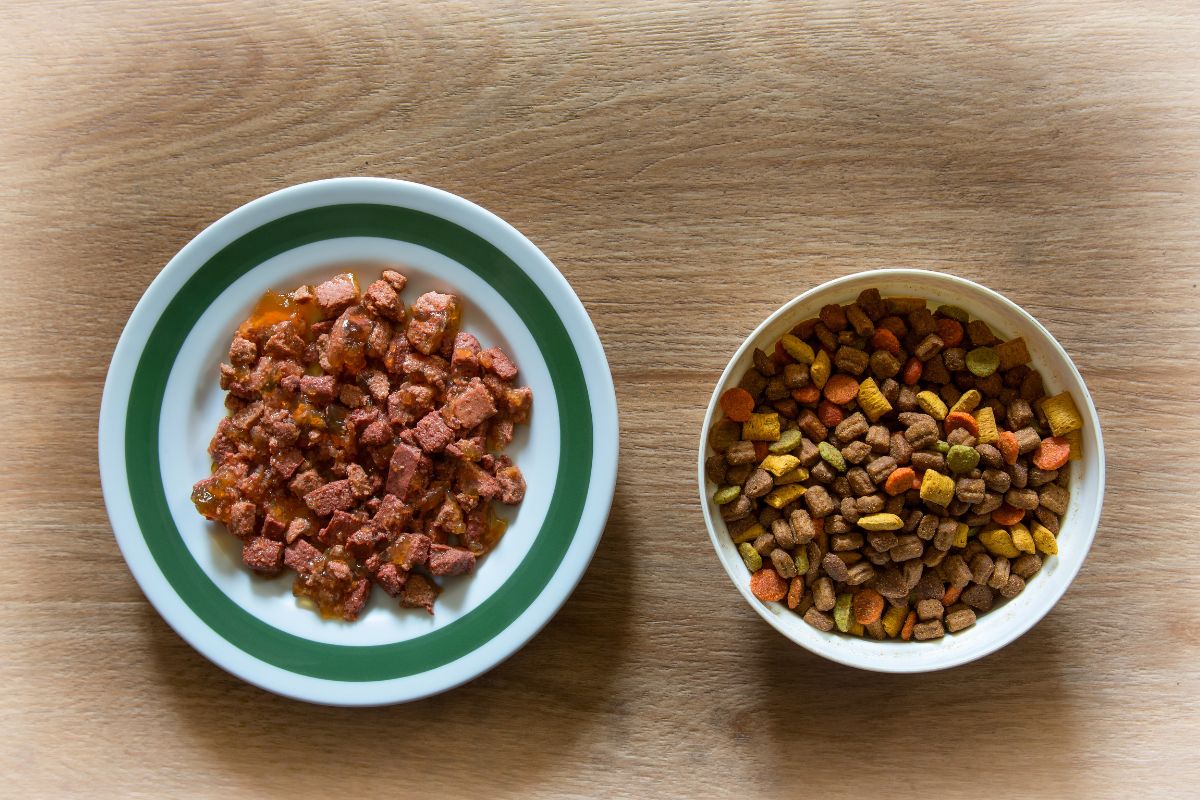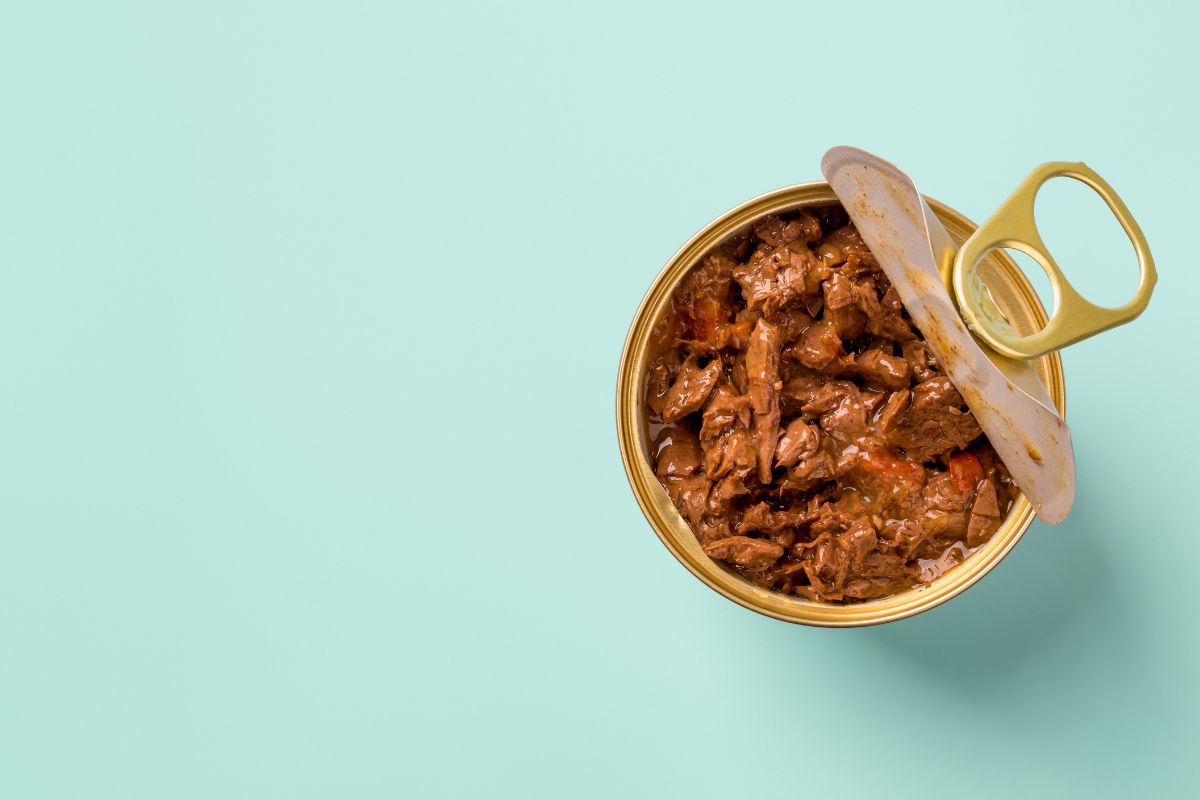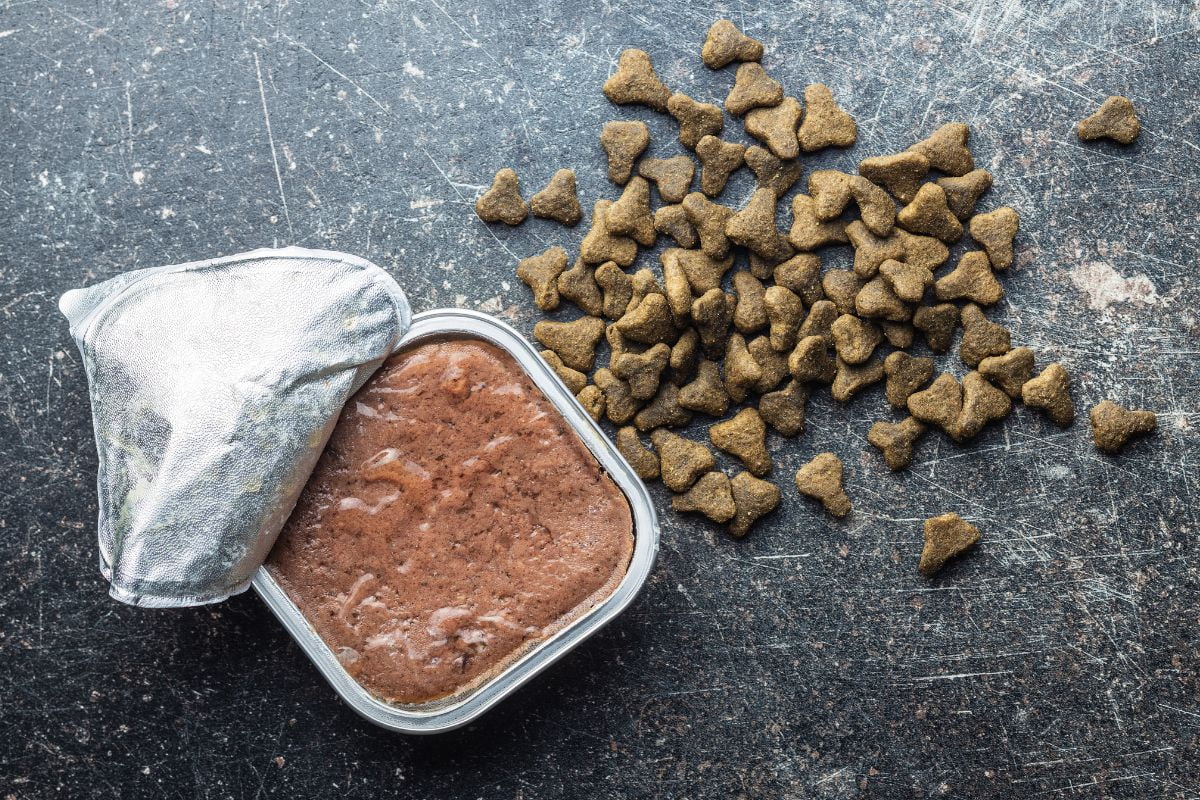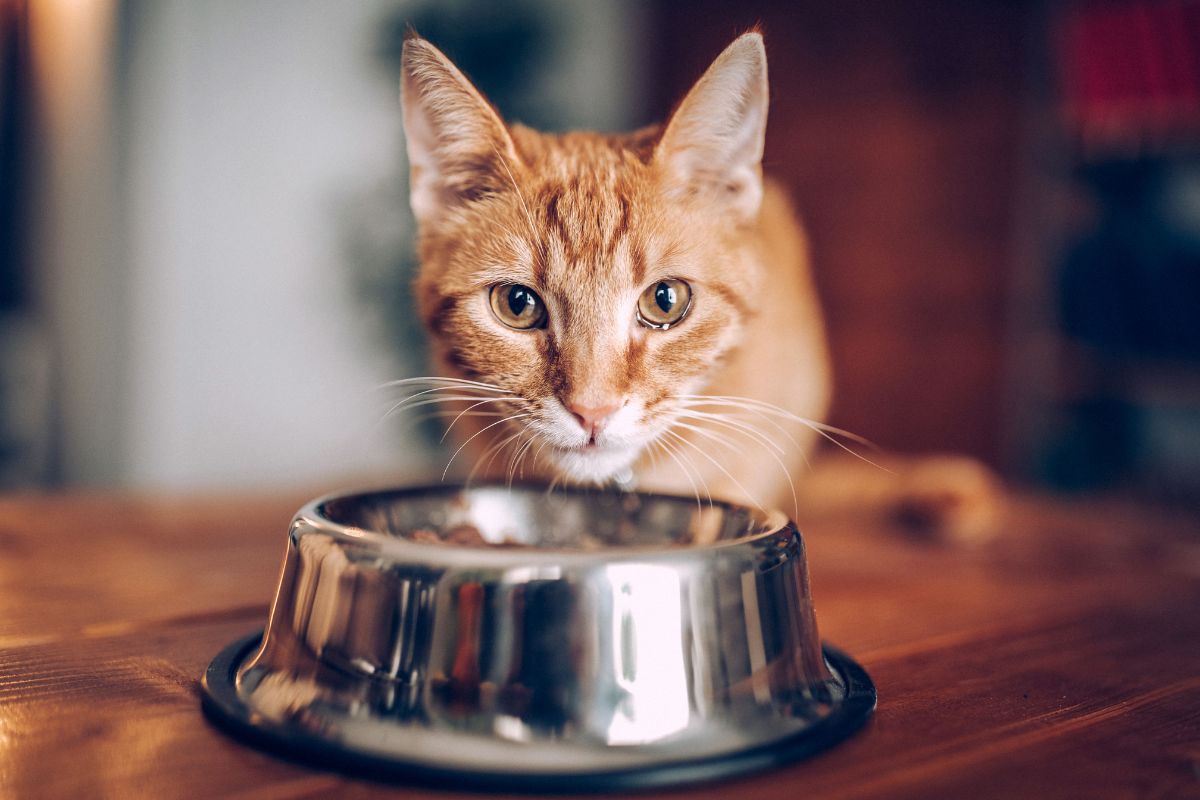For devoted pet parents, the cat food aisle is more than just a routine stop during grocery shopping—it’s a place where a crucial decision awaits. The question of whether to opt for wet cat food or dry cat food looms large, and the choice you make can significantly influence your beloved feline companion’s health and overall well-being.
In this comprehensive article, we’ll delve deep into the ongoing debate surrounding wet cat food versus its dry cat food counterpart. Our goal is to provide you with a well-informed perspective on the advantages and disadvantages of each option, ensuring that you can make a decision that best serves your furry friend’s dietary needs and preferences.
Whether you’re a first-time cat owner or a seasoned pet enthusiast, the information we’ll present here will guide you through the nuances of these two cat food categories. By the time you’ve reached the end of this article, you’ll be equipped with the knowledge necessary to make a thoughtful and educated choice when it comes to nourishing your beloved feline companion.
Understanding the Basics
1. Wet Cat Food
Key Points:
- High moisture content
- Rich in animal-based proteins
- Typically comes in cans or pouches
Wet cat food, also known as canned cat food, is renowned for its high moisture content. It’s composed of meat or fish, water, and other essential nutrients. This variety of cat food is cooked at high temperatures and then sealed in cans or pouches to maintain freshness.
Advantages of Wet Cat Food:
Hydration: Cats often struggle to drink enough water. Wet cat food helps them stay hydrated, reducing the risk of urinary tract issues.
Palatability: The rich aroma and flavor of wet food can be more appealing to cats, especially picky eaters.
Nutrient Balance: Wet cat food tends to have a balanced nutritional profile, with high protein content and fewer carbohydrates.
2. Dry Cat Food
Key Points:
- Low moisture content
- Contains more carbohydrates
- Available in kibble form
Dry cat food, commonly known as kibble, has a lower moisture content compared to its wet counterpart. It consists of a mixture of meat, grains, and various nutrients. Dry cat food is produced through a process that involves extrusion, resulting in bite-sized pieces.
Advantages of Dry Cat Food:
Convenience: Dry cat food is convenient for busy pet parents and can be left out for free feeding without spoiling.
Dental Health: The crunchy texture of kibble can help maintain your cat’s dental health by reducing plaque buildup.
Cost-Efficient: Dry cat food is often more budget-friendly than wet options.
The Great Debate: Wet vs. Dry Cat Food
When it comes to choosing the right cat food for your beloved feline friend, the ongoing debate between wet cat food and dry cat food rages on. This decision is not one to be taken lightly, as it can significantly impact your cat’s health and well-being. Let’s delve deeper into this spirited discussion, considering the pros and cons of each option while highlighting the critical keywords along the way.
Nutritional Considerations
Wet Cat Food – High moisture content, Rich in animal-based proteins
Wet cat food is often lauded for its nutritional advantages, primarily stemming from its high moisture content and protein-rich composition. This combination provides several key benefits for your cat’s health:
- Hydration: The high moisture content of wet cat food addresses a crucial aspect of feline nutrition. Proper hydration is essential for urinary tract health and overall well-being. Cats are notorious for their reluctance to drink water, making wet food an excellent solution to ensure they stay adequately hydrated.
- Animal-Based Proteins: Cats are obligate carnivores, meaning their bodies require animal-based proteins to thrive. Wet cat food typically contains a generous portion of these essential proteins, derived from sources like poultry, fish, and meat. These proteins support muscle development, energy levels, and overall health.
Dry Cat Food – Low moisture content, Contains more carbohydrates
Dry cat food, often referred to as kibble, has its own set of advantages and disadvantages:
- Low Moisture Content: Unlike wet cat food, kibble has a notably lower moisture content, typically ranging from 5% to 10%. While this may not contribute much to hydration, it does have some benefits. Dry food can be left out for free feeding without spoiling, making it convenient for pet parents with busy schedules.
- Carbohydrates: Dry cat food tends to contain more carbohydrates than wet food. While carbohydrates are a source of energy, cats have a limited need for them in their diet. Excessive carbohydrates can lead to weight gain and other health issues in some cats.
Hydration and Urinary Health
One of the primary factors that tip the scales in favor of wet cat food is its ability to address hydration and urinary health:
High Moisture Content: As mentioned earlier, wet cat food’s high moisture content is a game-changer for cats. It helps prevent urinary tract issues by ensuring that your feline companion maintains proper hydration. This is especially important for cats prone to kidney problems.
Urinary Tract Health: Cats are susceptible to urinary issues, including crystals and stones. The dilution effect of wet food helps reduce the risk of these problems, which can be painful and expensive to treat.
Dry cat food, on the other hand, with its low moisture content, may not be as effective at addressing hydration and urinary health. Cats on a dry diet may be at a higher risk of urinary problems.
Weight Management
Weight management is a critical consideration for cat owners, and it’s an area where both wet and dry cat food have their roles:
Wet Cat Food:
- Portion Control: When feeding wet cat food, it’s essential to monitor portion sizes carefully. Some wet foods can be calorie-dense, and overfeeding can lead to weight gain.
Dry Cat Food:
- Easier Portion Control: Kibble is convenient for measuring and controlling portions. This can be advantageous for cat owners looking to manage their cat’s weight effectively.
- It’s worth noting that obesity is a common concern among cats and finding the right balance of food and portion control is crucial, regardless of the type of food you choose.
Dental Health
Wet Cat Food:
- Dental Considerations: Wet cat food does not provide the same dental benefits as dry food. The soft texture does not offer the same abrasive action on teeth that chewing kibble does. As a result, some cats may be at a higher risk of dental issues.
Dry Cat Food:
- Oral Health: The crunchiness of kibble can help reduce plaque and tartar buildup on your cat’s teeth. While it’s not a substitute for regular dental care, it can contribute to better oral hygiene.
Making the Right Choice: Wet Cat Food vs. Dry Cat Food
In the ongoing deliberation between wet cat food and dry cat food, the decision-making process can be challenging. It’s essential to make a choice that aligns with your feline companion’s unique needs and preferences. Here, we’ll dive deeper into the strategies and considerations that can help you arrive at the right decision while keeping in mind the crucial keywords.
Consult Your Veterinarian: When it comes to choosing the ideal cat food, your veterinarian should be your most trusted advisor. Their expertise in feline health and nutrition makes them invaluable in guiding you toward the right decision. Consider these key aspects of veterinary consultation:
- Professional Guidance: Veterinarians can provide personalized dietary recommendations tailored to your cat’s specific requirements. They take into account your cat’s age, activity level, medical history, and any existing health concerns.
- Health Checkup: Regular checkups allow your vet to monitor your cat’s health and make adjustments to their diet as needed. This proactive approach can prevent or address potential issues before they become more serious.
- Dietary Allergies or Sensitivities: If your cat has known food allergies or sensitivities, your vet can recommend suitable options to avoid potential adverse reactions.
- Transitioning Guidance: If you decide to switch your cat’s diet, your veterinarian can offer advice on how to do so gradually to minimize digestive upset.
Consider a Mix: The wet vs. dry cat food debate doesn’t necessarily demand an exclusive choice. Many pet parents opt for a combination of both options, creating a balanced diet that caters to different nutritional needs. Here’s how you can approach this:
- Variety: Mixing wet and dry cat food can provide variety in your cat’s meals, preventing them from getting bored with their diet. Just as humans enjoy diverse foods, cats may appreciate different textures and flavors.
- Nutritional Balance: You can use wet food to address hydration and provide animal-based proteins while using dry food for the convenience of portion control. This balanced approach can cater to various aspects of your cat’s health.
- Consult Your Vet: Before implementing a mixed diet, consult your veterinarian to ensure it aligns with your cat’s specific requirements and doesn’t lead to overfeeding.
Read Labels Carefully: Regardless of whether you choose wet cat food or dry cat food, reading labels is essential to make informed decisions. Pay close attention to the following:
- Ingredients List: Look for high-quality ingredients. In wet cat food, prioritize options that feature real animal proteins as the primary ingredient. For dry food, seek options that offer balanced nutrition without excessive fillers.
- Artificial Additives: Avoid foods with excessive artificial additives, preservatives, and colorings. Opt for options that prioritize natural ingredients.
- Nutritional Standards: Ensure that the cat food meets essential nutritional standards established by reputable organizations. This includes a balanced profile of protein, fat, and carbohydrates.
- Allergen Information: If your cat has allergies or sensitivities, carefully check for any potential allergens in the ingredients list.
Monitor Your Cat: Once you’ve made your choice, your responsibilities as a pet parent continue. Regular monitoring of your cat’s health and well-being is crucial to ensure they thrive on their chosen diet:
- Weight Management: Keep an eye on your cat’s weight. If you notice significant weight gain or loss, consult your veterinarian to adjust your portions accordingly.
- Hydration: Even if you choose dry cat food, make sure your cat has access to clean, fresh water at all times to support their hydration needs.
- Behavior and Health: Pay attention to changes in your cat’s behavior, energy levels, and overall health. Any sudden shifts could be indicative of dietary issues that require investigation.
- Regular Checkups: Schedule regular checkups with your veterinarian to assess your cat’s overall health and ensure their diet remains appropriate for their life stage.
In the wet vs. dry cat food debate, there is no definitive winner. Each type has its advantages and disadvantages. What matters most is providing your feline friend with a balanced, nutritious diet that suits their unique needs. Remember, the key to a happy and healthy cat is the love and care you provide, whether it’s through a bowl of wet food, a handful of kibble, or a combination of both.
By making informed choices and keeping your pet’s well-being a priority, you can ensure that your beloved cat enjoys a long and fulfilling life.











